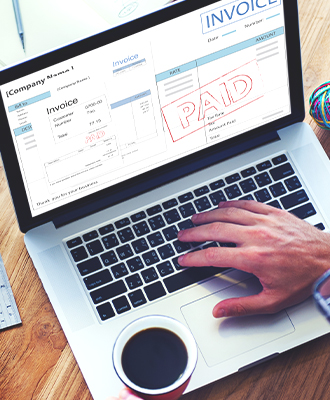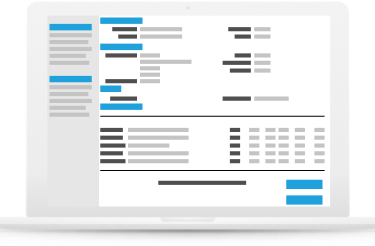Capital, like data, drives the day-to-day operations of businesses around the world. Having a strong enough cash flow to cover your debts, keep your business humming, and invest in innovation requires careful financial management.
Using tools such as the net working capital formula (NWC formula), financial professionals track their companies’ current assets and current liabilities to ensure obligations are met, with enough left over to cover both unexpected challenges and unlooked-for investment opportunities.
Working Capital Definition
Whether you’re a small business owner or part of a large corporate finance team, your organization needs cash to cover its business needs and pursue its goals for growth, investment, and innovation. Liquid assets are of capital importance (pun absolutely intended) in supporting this mission.
Answering the question “what is net working capital?” is fairly straightforward. Boiled down to its essence, net working capital is a financial ratio describing the difference between an organization’s current assets and current liabilities. It appears on the balance sheet and is used to measure short-term liquidity, or a company’s ability to meet its existing short-term obligations while also covering business operations.
Positive Net Working Capital indicates your company can meet its existing financial obligations and has funds to spare for investment, operational development or expansion, innovation, emergencies, etc.
Net Zero Working Capital indicates your company’s liquidity is sufficient to meet its obligations but doesn’t have the cash flow for investment, expansion, etc.
Negative Net Working Capital indicates your company cannot cover its current debt and will likely need to secure loans or investment to continue operations and preserve solvency.
The financial model for forecasting net working capital is commonly driven by a range of processes within your company’s financial workflows related to current assets and current liabilities.
Current assets appear on the balance sheet as short-term assets that will be converted to cash within a year or less. They include:
- Cash and cash equivalents (e.g., bank accounts)
- Accounts receivable balance.
- Inventory balance.
- Marketable investments.
- Marketable securities.
- Money market funds.
- Short-term government bonds.
- Treasury bills.
- Prepaid expenses.
Current liabilities appear on the balance sheet as short-term financial obligations that must be paid within a year. They include:
- Lines of credit.
- Short-term loans.
- Your company’s accounts payable.
- Credit cards.
- Vendor notes.
- Trade debts.
- Current installments for long-term debt such as small business loans.
“Boiled down to its essence, net working capital is a financial ratio describing the difference between an organization’s current assets and current liabilities. It appears on the balance sheet and is used to measure short-term liquidity, or how well a company can meet its existing short-term obligations while also covering business operations.”
Why Is Net Working Capital Important to Your Business?
A positive net working capital balance is generally considered to be much more desirable than a negative one, as the former indicates strong cash flow and the latter indicates looming financial difficulties that can hamper operations, investment, and supplier relationships.
However, positive net working capital isn’t necessarily always a net positive for your company’s competitive, operational, and financial health. If you find yourself swimming in extra cash, it’s likely you’re not investing your liquid assets as strategically as you might and are missing out on opportunities to grow, produce new products, etc.
In addition, your liquid assets may not be quite as liquid as they seem—some assets, such as inventory, are more difficult to convert to cash than others—and so your NWC may not provide you with a clear picture of your actual free cash flow.
Regardless, understanding what working capital means to your business, how to calculate it correctly, and effective tools and techniques for tracking and optimizing it gives you greater control over your company’s cash flow and helps you plan, spend, and invest more effectively.
Calculating Net Working Capital
Determining your company’s NWC is a simple task. Like other financial ratios used in drafting financial statements, net working capital is comparative, and so uses a basic equation:
The most comprehensive version, which includes all accounts, is as follows:
Current Assets – Current Liabilities = Net Working Capital
You can narrow the focus of your Net working capital calculation by removing cash and debts.
Current Assets (minus cash) – Current Liabilities (minus debts) = Net Working Capital
Finally, you can tighten the focus of the net working capital formula even further by limiting your input to just three accounts:
(Accounts Receivable + Inventory) – Accounts Payable = Net Working Capital
You can also calculate changes in your net working capital by using this formula:
Current Net Working Capital – Previous Net Working Capital = Change in Net Working Capital
Tracking changes in NWC matters because it provides a convenient way to keep an eye on operating cash flow and make smart decisions to preserve liquidity when you need it most or identify areas where too much capital is tied up in assets that are not readily made liquid.
Finally, you can calculate your net working capital ratio—the percentage of a company’s current assets as compared to its short-term debts—using this formula:
Current Assets ÷ Current Liabilities = NWC Ratio
The optimal NWC ratio falls between 1.2 and 2, meaning you have between 1.2 times and twice as many current assets as you do short-term liabilities. If your NWC ratio climbs too high, you may not be leveraging your current assets with optimal efficiency.
Net Working Capital Formula Example
In order to better understand the ways in which NWC, changes in NWC, and the NWC ratio are used, let us consider the example of fictional business Company X and its efforts to monitor and manage its liquidity.
For current assets, Company X has:
- $75,000 in cash and cash equivalents.
- An accounts receivable balance of $8,500.
- Inventory worth $15,000.
On the other side of the balance sheet, it has:
- A short-term loan for $50,000
- An accounts payable balance of $10,000
- Accrued liabilities of $6,200
Plugging these values into our net working capital calculator, we get:
$75,000 + $8,500 + $15,000 = $98,500 in total current assets.
$50,000 + $10,000 + $6,200 = $66,200 in total current liabilities.
We can now use these totals to calculate NWC:
$98,500 – $66,200 = $32,300
Company X has a net working capital balance of $32,300. This compares favorably to last year, when its NWC balance was $14,000 ($97,000 – $83,000).
We can further contextualize this value by plugging it into our formula for the net working capital ratio, as follows:
$98,500 ÷ $66,200 = 1.49
The current ratio is much better than the previous year’s NWC ratio, which was:
$97,000 ÷ $83,000 = 1.17
It seems as though Company X has a fairly healthy NWC ratio and is making good use of its current assets, especially compared to the previous year, which fell just below the ideal range for the NWC ratio and put them at risk of failing to cover their short-term debts.
However, depending on the nature of their business, they may want to keep an eye on inventory levels to ensure they don’t have too much of their capital tied up in assets that may depreciate before they can be sold or otherwise converted to cash.
Increasing Your Net Working Capital
If your business is constantly struggling to maintain a healthy cash flow, you can improve your net working capital in a few ways.
1. Increase Your Inventory Turnover Ratio.
Overstocked warehouses can be graveyards for liquidity. Unless you’re selling at cost, inventory sold will always provide more cash than inventory waiting to be sold, so look for opportunities to streamline your inventory management so you can maintain safety stock without suffering from inventory bloat.
2. Liquidate Long-Term Assets
Some assets, such as production and office equipment, are considered long-term rather than current assets. If you’re sitting on a pile of unused long-term assets, selling them for cash will provide a boost to liquidity while freeing you from other associated costs such as storage and maintenance (especially important for mothballed equipment that is not otherwise providing value).
3. Refinance to Turn Short-Term Debt into Long-Term Debt
Consolidating short-term debt into long-term debt will boost NWC (although you will still have to account for this year’s current portion of the debt), providing more capital for investment and innovations that will produce value and savings to pay off all your debt more effectively.
4. Invest in Financial Software Tools
Like so many other business processes, managing net working capital is much easier with help from digital transformation tools such as artificial intelligence, advanced data analytics, and robotic process automation.
Implementing a robust procure-to-pay software solution such as PurchaseControl, for example, makes it much easier to track, manage, and contextualize NWC by:
- Providing centralized and comprehensive data collection, organization, and analysis capabilities.
- Eliminating the need for paper-based, manual workflows—and reducing or eliminating human error and delays at the same time.
- Simplifying inventory management.
- Using automation to streamline processes that support other important financial metrics, such as your accounts payable turnover ratio, so you have the data, context, and time to make strategic cash flow management decisions.
- Providing powerful reporting tools and mobile-friendly, role-appropriate access to data so your financial leaders have all the information they need to most effectively leverage spend to preserve liquidity while still supporting operations and other business needs.
- Providing a comprehensive view of diverse data sources to identify new opportunities to put cash to good use through strategic investment, product development, strategic partnerships with key suppliers, etc.
Tracking Your NWC Helps You Meet Your Obligations and Invest in Innovation
Does your company struggle to cover its current outstanding debts? It might be time to take action. Optimize your processes to reduce liabilities and increase current assets, and gain greater competitive strength with a positive net working capital balance. You’ll have the cash you need to cover short-term obligations, handle emergencies, and invest in growth and innovation.
Optimize Your Financial Performance with PurchaseControl's Data Management and Reporting Tools
Find Out How








